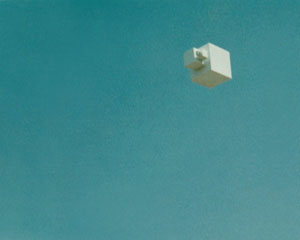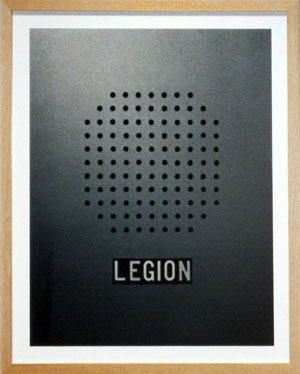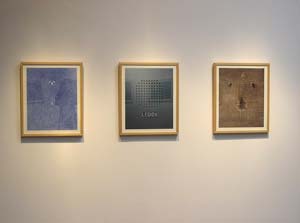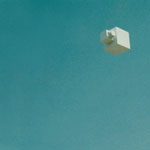A photo is not a painting. And Brian Fridge's minimal photos are anything but minimalist. His exhibition Photography will be on display at Dunn and Brown Contemporary through February 10.
Purity is the conceptual engine of minimalism. The movement was
based on the idea that visual form is the essential element of visual
art. It was driven by attempts to pare away all other gratuitous
elements — e.g., decoration, meaning, and style — to create a pure
visual experience. Photography annihilates this effort for two reasons.
First, the difference between a painting and photograph is that between
a frame and a mirror. Both edit and can distort. Both can be used to
document or deceive. But the frame is direct: what is in it is itself.
The mirror, on the other hand, is a reflection. Photography
axiomatically can never be reduced to a pure essence because it is
always a reference to something else. Second, a photo can never be
materially pure (or adulterated, for that matter). It is the adherence
of three inks to paper. Whether this process creates an elaborate
kaleidoscope of color or a simple gray field is irrelevant. There is no
pure white or black or color in a photograph, just different ratios of
three colors.
Fridge articulates this difference in Untitled (2006), a
gray field dissected by a single black line. It is the exhibition's
simplest and most formal work. Fridge allows for nothing other than the
beauty of geometry to engage the viewer. Conceptually, in his deference
to artists like Josef Albers and Barnett Newman,
Fridge forces the viewer to understand the difference between these two
media. The viewer does not escape the mirror quality of photography. Untitled
refers to something. Is it a line on a wall or it is a print of a black
line on white paper? This is what shatters it as a minimalist piece. In
contrast, the subject of a Newman is the Newman. Minimalism
folds into itself, whereas a photo demands a source and so cannot
achieve the meta-reductionism of high minimalist art.
Fridge applies the same uncanny mastery of subtly
to several other images. In Untitled (1992-2006), a photo of a grid of
circles with the word 'legion' set on a plate under it provokes the
viewer. Fridge invests the work with several authoritarian references.
It is colored in an industrial gray blue. The subject — a legion, or
military force — is about conformity. Each of the holes in the grid is
subservient to the grid. But the work is far too abstract to generate
any definite political connotations. The exhibition's most conceptually
complicated image is Untitled (2003-2005), a photo of an incestuous
white cube floating in the top left corner of the picture. The subject
of the photo is the floating geometric form — a white cube, out of
which comes another white cube, off of whose side comes a third. The
form looks like a computer-generated image of a math equation. As such,
it reads less as an object than as a sign of an abstraction. It exists
only as a reflection of an equation. By taking a photo of it, Fridge
has removed the form another step from its source: tt becomes more real
in the act of its recording than in its generation. The blue field is
made up of pixels of several colors. It shows the blue not as a field
of color but as a matrix of colors. This is not a photo of an object
but a photo of a video, or at least a computer screen. If photography
is a recording, Untitled is a recording of an echo. This dynamic
engages the viewer.
The exhibition also includes Sequence 4.3 (2005), made in collaboration with Paul Slocum,
a video loop of varying amounts of dots moving on an amber field. This
work does not show Fridge's savvy: his ability to understand the nuance
of a medium is distinctly absent from this work. Nor does the projected
video have the same quality of reference as his photos. The image reads
as an animation not an abstraction. One of the crucial elements of
Fridge's work is that he creates generations of representations. His
takes images of images manifested in secondary medium. This video
display lacks the element of boldness evident in Fridge's photography.
There may be a source from which the image is abstracted, but that
source is too obscure and the image too disengaging to decode. Compared
to his photos, which are distinct — not the kind of images that would
be found in the mass media — the video is pedestrian: a kind of artsy
game of ping-pong.
Fridge's work is difficult. At his best, Fridge taps into how
very subtle changes in the context of an image can change perception,
like the difference between a solid and a pixilated blue field. To
magnify these differences, Fridge pares his images down to only what is
needed. Instead of minimalist, his austere photos are conceptually
baroque.
Images courtesy Dunn and Brown Contemporary








